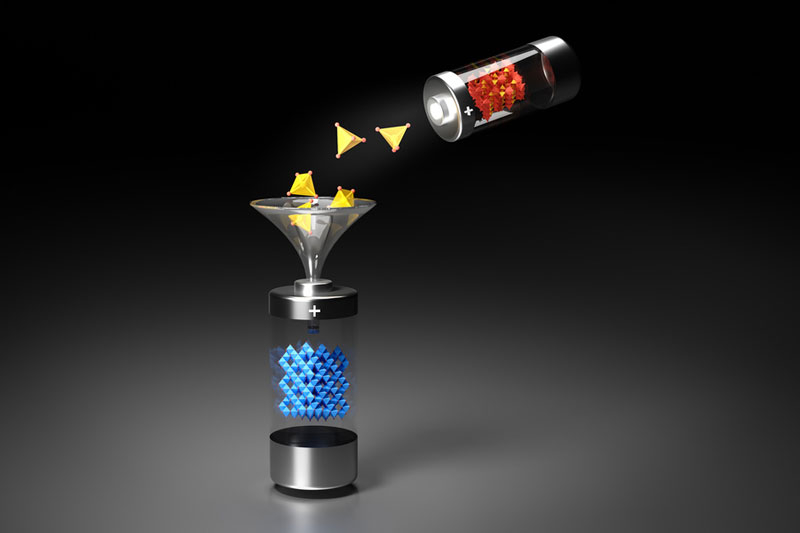The best combination of materials for a new generation of battery cathodes has been discovered in the USA


Scientists from the Massachusetts Institute of Technology are confident that the future of batteries lies in manganese compounds, which will make them cheaper and more capacious. To prove this, the researchers created a cathode material high in the mineral that is 30 times cheaper than cobalt. But it’s not just about the price. Potentially, cathodes with high manganese content will provide higher energy storage density and a number of other benefits.


Image source: Mit
In their work on more advanced battery electrodes, the researchers studied so-called disordered rock salt (DRX) materials. This is not the rock salt that is also called table salt. Typically, DRX are oxides, such as lithium oxide, but not necessarily. Scientists have already confirmed the unusually high potential of DRX materials for the manufacture of battery anodes and cathodes. But they discovered a significant drawback – a low level of cycling. They were quickly depleted – they became unusable as storage devices and conductors of ions.
«In cathode materials, there is typically a trade-off between energy density and cycling stability… and in this work, we aim to push the envelope by developing new cathode chemistry,” the inventors explain. “The (introduced) family of materials has high energy density and good cycling stability because it uses two main types of cathode materials—rock salt and polyanionic olivine—so it has the benefits of both.”
In other words, scientists selected a ratio of DRX and polyanions (this is a large range of compounds with an excess of negatively charged groups) that would maintain a high energy density and the possibility of multiple charge exchange. A certain problem was the high mobility of oxygen in the cathode when charging batteries with high voltage – another highlight of the new batteries, but it was solved by introducing an oxygen-binding substance – phosphorus.
Ideally, electrodes based on DRX materials can provide up to 350 mAh/g, while traditional cathodes provide energy storage densities of no more than 200 mAh/g. The addition of polyanions will ensure their stability for many charge and discharge cycles, and the use of manganese instead of nickel and, especially, cobalt will make the production of batteries cheaper. But all this is in the future. There is still a lot of research work to be done before commercial production of electrodes from DRX materials becomes a reality.
Recent Posts
Nvidia to Release Simplified Blackwell Accelerator for China Costing $6,500-8,000
Nvidia is developing a stripped-down and cheaper AI accelerator based on the Blackwell architecture specifically…
German court rules that websites must have a button to reject all cookies at once
The Hanover Administrative Court has issued a ruling that tightens the protection of digital privacy…
Nuclear restructuring has begun in the US — Trump wants to step up construction of nuclear power plants
The day before, Donald Trump signed a series of executive orders that will lead to…
To Fix Problems at His Companies, Elon Musk Decides to Sleep on the Job
After widespread user complaints about unstable operation of X on Friday and Saturday, Elon Musk…
The Midnight Walk – A Spark That Will Catch a Flame. Review
PlayStation 5 played MoonHood Studio was founded in 2023, but its employees have been working…
“What do you see: craters or bulges?” – Japanese probe Resilience photographs the south pole of the Moon
The Japanese private probe Resilience has taken a high-quality photo of the Moon's south pole…